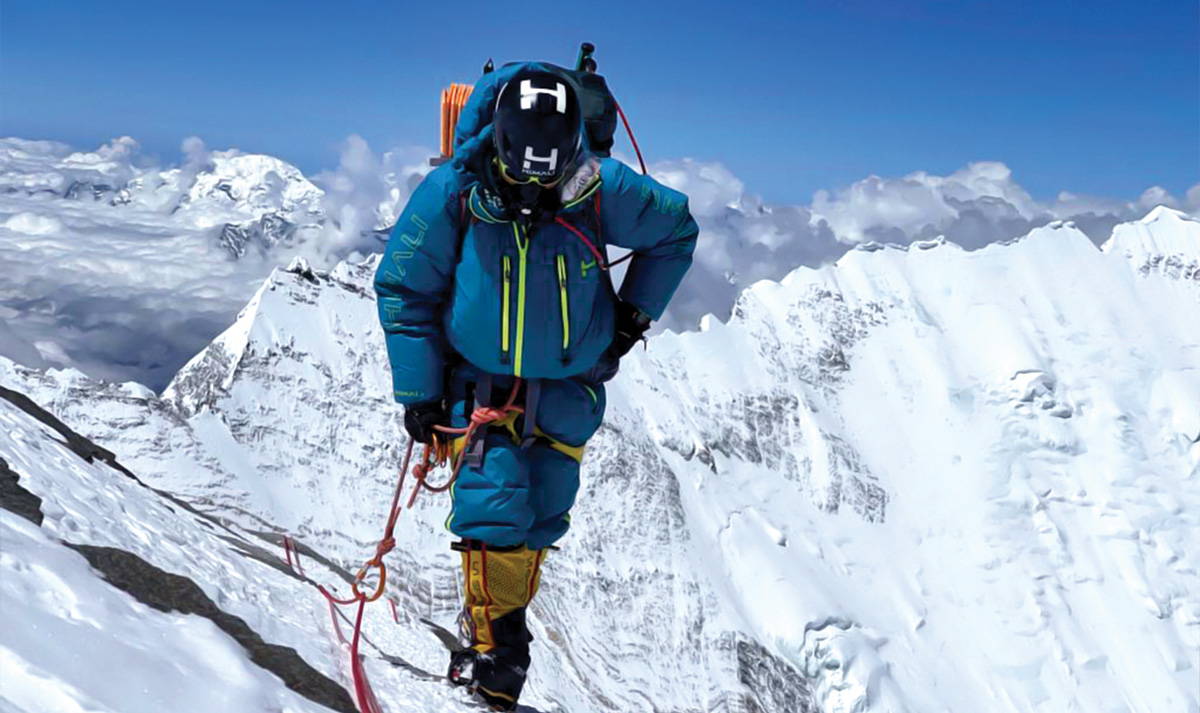Altitude Training Basics

May 9, 2023
Disclaimer: This article is meant to provide general information about altitude sickness & acclimatization. It is not meant to provide medical, training, or any other form of advice. Altitude sickness is a serious condition, please seek the advice of a medical professional if you are worried about experiencing any of the symptoms of altitude sickness.
For more information, see our article onAltitude Sickness & Acclimatization.
Why should you use altitude as part of your training?
Many mountain athletes use altitude training as a way to enhance their performance and endurance. The basic idea behind altitude training is that by exposing the body to lower oxygen levels at high altitude, it can stimulate adaptations that improve performance at sea level.
Some of the benefits of altitude training include:
• Improved Oxygen Utilization: Altitude training can also improve the body's ability to use oxygen more efficiently by increasing the number of capillaries and mitochondria in the muscles. This can improve endurance and delay the onset of fatigue during exercise.
• Enhanced Ventilatory Response: Exposure to lower oxygen levels at high altitude can also increase the body's respiratory rate and depth, which can improve ventilation and oxygen uptake during exercise.
• Mental Toughness: Training at high altitude can also provide mental benefits by forcing athletes to push through discomfort and challenging conditions. This can improve mental toughness, resilience, and the ability to cope with stress.
It's worth noting that the effects of altitude training can vary depending on the individual, the duration and intensity of the training, and other factors such as the altitude and climate of the training location. Additionally, altitude training may not be appropriate for all athletes or individuals with certain health conditions. It's important to consult with a qualified coach or medical professional before beginning altitude training.

How should you use altitude as part of your training?
There are several ways to use altitude for training:
• Live High, Train Low: This method involves living at high altitude (typically above 2,000 meters or 6,500 feet) for an extended period of time while training at lower altitudes. The idea is to take advantage of the physiological adaptations that occur at high altitude while still being able to train at a higher intensity at lower altitudes where the air is denser and the oxygen levels are higher.
• Intermittent Hypoxic Exposure (IHE): This method involves using devices that simulate high altitude environments to intermittently expose the body to lower oxygen levels during training sessions. This can include devices such as hypoxic tents, masks, or chambers. The goal is to create a hypoxic stress on the body to stimulate adaptations that improve performance.
• Altitude Training Camps: Many athletes and teams will travel to high altitude locations for training camps to take advantage of the physiological adaptations that occur at high altitude. This can include activities such as hiking, running, cycling, and other endurance activities.

Heat Training: Can you use it as a substitute for altitude training?
Heat training and altitude training are two different physiological stressors that can have some similar effects on the body, but they cannot be used as exact proxies for one another.
Both heat training and altitude training can lead to an increase in plasma volume, an increase in red blood cell production, and improvements in endurance performance. However, the mechanisms by which they achieve these effects are different. Altitude training primarily stimulates the body to produce more red blood cells, while heat training primarily leads to an increase in plasma volume and adaptations that improve heat tolerance.
Additionally, the timing and duration of the adaptations to heat and altitude training can be different. The body's response to altitude training tends to occur over a longer period of time, with peak effects typically seen after several weeks or months of exposure. In contrast, heat training can lead to more rapid adaptations, with some studies reporting improvements in endurance performance after just a few days of heat exposure.
While heat training can provide some benefits for endurance athletes, it cannot completely replace altitude training as a training method. However, heat training can be used as a complementary training method to help prepare for competition in hot environments or to supplement altitude training when it's not feasible to train at high altitude.
Want to keep learning?
Additional References & Resources:

